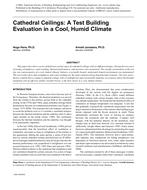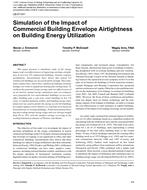As residential building codes and above-code programs move toward tighter homes with whole-house mechanical ventilation, the reliability and homeowner use of ventilation systems become extremely important. What happens when a system fails? Do occupants repair it? Are failures a common enough problem that this is a concern? If failures are a problem, are there steps code bodies can take to minimize risk to health and safety?A 21-home field study was conducted investigating the failure rates of whole-house mechanical ventilation systems installed in Florida homes over the last 15 years (12 of the 21 systems were installed in the last 3 years). Researchers conducted a survey to assess homeowner ventilation system awareness and maintenance practices, and inspected and tested ventilation systems to assess operational status, level of ventilation provided, and identify performance issues. Homeowners surveyed felt ventilation was important for health, but many were unaware of how their ventilation system operated.Testing found only 3 of the 21 study homes (14.3%) had ventilation air flow close to the design level. Two of the ventilation systems were turned off by the homeowner, so only one of 21 homes (4.8%) was actually receiving the expected ventilation. Only 12 of the 21 homes (57.1%) were capable of operating. Issues identified included failed controllers and dampers, partially disconnected or crushed ducts, dirty filters, and poor outdoor air intake locations.
Citation: ASHRAE and AIVC IAQ 2016 Conf
Product Details
- Published:
- 2016
- Number of Pages:
- 8
- Units of Measure:
- Dual
- File Size:
- 1 file , 1.9 MB
- Product Code(s):
- D-2016IAQ-41


